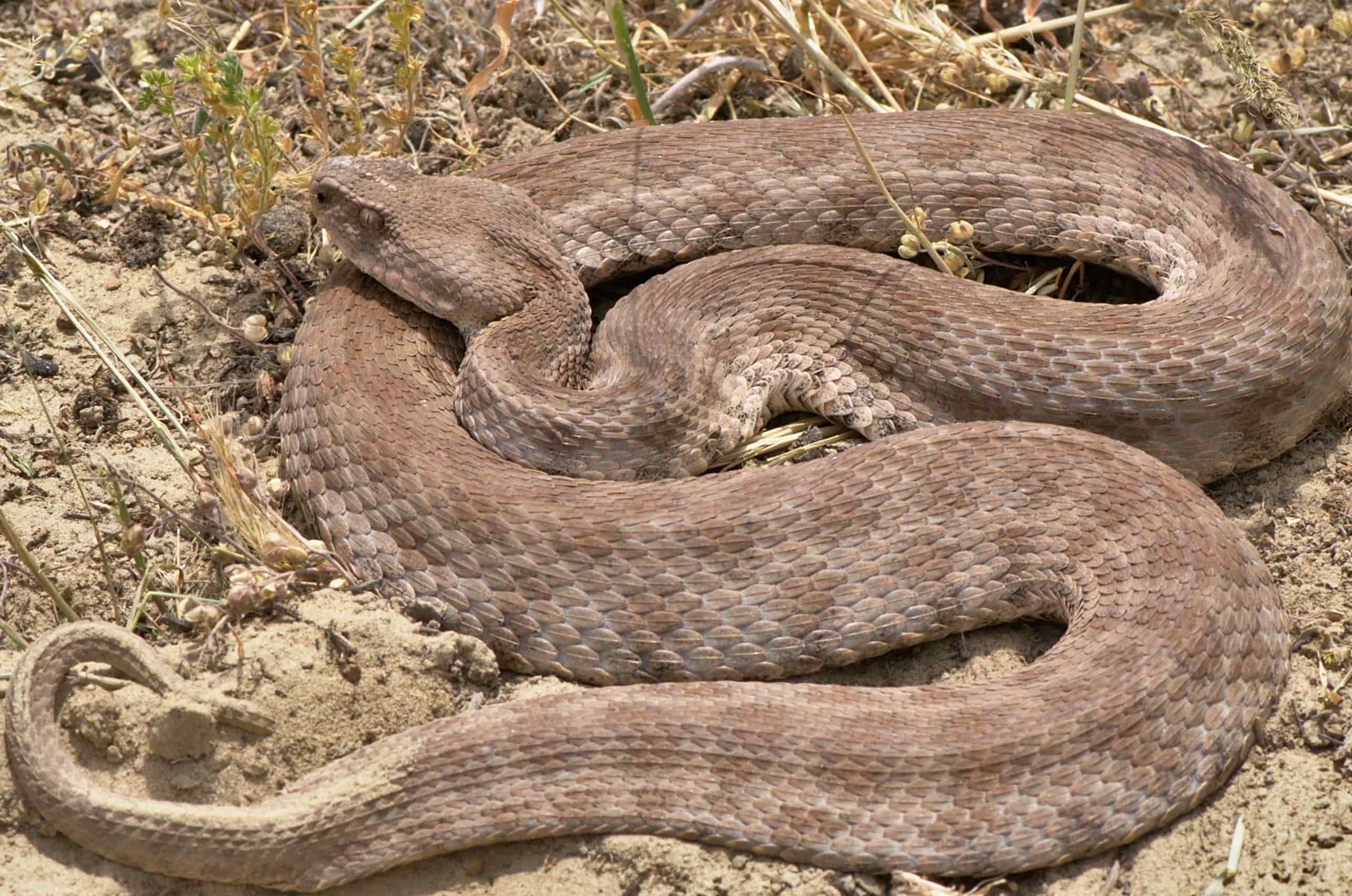
The Blunt-nosed Viper, scientifically known as Vipera Lebetina, is a fascinating reptile that inhabits various regions, ranging from Europe to North Africa and the Middle East. This venomous snake belongs to the Viperidae family and possesses unique characteristics that set it apart from other species.
In this article, we will delve into the amazing world of the Blunt-nosed Viper and uncover 15 extraordinary facts about this intriguing snake. From its appearance and venom to its behavior and habitat, you will discover remarkable insights that will deepen your understanding and appreciation for this enigmatic creature.
So, buckle up and get ready to explore the captivating world of the Blunt-nosed Viper as we unravel its mysteries and unveil the remarkable features that make it one of the most fascinating snakes in the animal kingdom.
Key Takeaways:
- The Blunt-nosed Viper is a venomous snake with potent venom, unique camouflage, and a crucial role in its ecosystem. It’s a protected species facing threats from habitat loss and illegal collection.
- Blunt-nosed Vipers have fascinating traits, including nocturnal behavior, heat-sensitive pits, and live birth. They play a vital role in nature and are the focus of conservation efforts to ensure their survival.
The Blunt-nosed Viper is a venomous snake species.
The Blunt-nosed Viper, also known as Macrovipera lebetina, is a venomous snake species found in various parts of Europe, Asia, and North Africa. With its distinctive blunt-shaped head, it stands out among other snakes.
It is known for its potent venom.
The venom of the Blunt-nosed Viper is highly toxic. It contains a combination of proteins and enzymes that can cause significant tissue damage and even lead to death if not treated promptly.
The Blunt-nosed Viper has a unique camouflage.
This snake species has a remarkable ability to blend into its surroundings. Its coloration and pattern allow it to hide among rocks, sand, and vegetation, making it difficult to spot.
It preys on a variety of small animals.
The Blunt-nosed Viper primarily feeds on small mammals, such as rodents, as well as lizards and birds. It uses its venom to immobilize and digest its prey.
The females are larger than the males.
In the Blunt-nosed Viper species, the females tend to be larger and heavier than the males. This size difference may be attributed to the reproductive demands of the females.
There are different subspecies of Blunt-nosed Vipers.
Blunt-nosed Vipers have several subspecies, including the widely recognized Macrovipera lebetina lebetina and Macrovipera lebetina obtusa. Each subspecies may have specific characteristics and habitat preferences.
The Blunt-nosed Viper is nocturnal.
This snake species is mainly active during the night, preferring to hunt and search for mates under the cover of darkness. During the daytime, it seeks cool and sheltered spots to rest.
It has heat-sensitive pits.
The Blunt-nosed Viper possesses specialized organs called heat-sensitive pits located on its snout. These pits allow it to detect and locate warm-blooded prey, enhancing its hunting capabilities.
Blunt-nosed Vipers play an important ecological role.
As predators, the presence of Blunt-nosed Vipers helps regulate populations of small mammals and contribute to the overall balance of their ecosystems.
They are known to hibernate during winter.
During colder months, Blunt-nosed Vipers enter a state of hibernation to conserve energy. They seek out suitable hiding places, such as crevices or underground burrows, until the weather becomes favorable again.
The venom of the Blunt-nosed Viper has medicinal properties.
Although highly toxic, certain components of the Blunt-nosed Viper’s venom have been found to have potential medicinal uses. Research is ongoing to explore its therapeutic properties.
Blunt-nosed Vipers can live for several decades.
With proper conditions and care, Blunt-nosed Vipers have been known to live for more than 20 years in captivity. In the wild, their lifespan may vary depending on various factors.
They have a unique reproduction method.
In the Blunt-nosed Viper species, the females are ovoviviparous, meaning they give birth to live young. They carry their eggs internally until they hatch, and then give birth to fully formed juveniles.
The Blunt-nosed Viper is a protected species.
Due to habitat loss, illegal collection for the pet trade, and other human-related factors, the Blunt-nosed Viper is considered a protected species in many countries. Conservation efforts are in place to ensure its survival.
Blunt-nosed Vipers have a unique defensive behavior.
When threatened, the Blunt-nosed Viper often exhibits a defensive behavior known as “caudal luring.” It flicks its tail rapidly, mimicking the movement of a worm or insect, to divert attention from its head and potentially confuse predators.
Conclusion
In conclusion, the blunt-nosed viper is a truly remarkable creature. With its distinctive appearance and potent venom, it is both fascinating and dangerous. From its ability to camouflage itself in its surroundings to its unique breeding habits, this snake has several extraordinary characteristics that set it apart from other species.The blunt-nosed viper’s role in the ecosystem is also noteworthy. By controlling the population of small mammals and other creatures, it helps maintain a balanced ecosystem. While it may inspire fear and caution in humans, it is crucial to respect and protect these creatures in their natural habitats.Learning about the blunt-nosed viper not only increases our knowledge of the animal kingdom but also raises awareness about the importance of biodiversity. By understanding and appreciating these extraordinary facts, we can contribute to the conservation efforts of this remarkable species and other wildlife around the world.
FAQs
Q: Are blunt-nosed vipers venomous?
A: Yes, blunt-nosed vipers are venomous. Their venom is potent and can cause severe symptoms if bitten.
Q: How long do blunt-nosed vipers live?
A: Blunt-nosed vipers have an average lifespan of 10 to 15 years in the wild.
Q: Where can blunt-nosed vipers be found?
A: Blunt-nosed vipers are native to various regions, including Europe, Asia, and the Middle East.
Q: Do blunt-nosed vipers have any predators?
A: While adult blunt-nosed vipers have few natural predators, juveniles may fall prey to larger reptiles, birds, and mammals.
Q: Are blunt-nosed vipers aggressive towards humans?
A: Blunt-nosed vipers are not generally aggressive towards humans unless they feel threatened or provoked.
Q: What should I do if I encounter a blunt-nosed viper?
A: If you come across a blunt-nosed viper, it is best to maintain a safe distance and avoid any sudden movements. Seek professional assistance if it poses a threat.
Q: Can blunt-nosed vipers be kept as pets?
A: Keeping blunt-nosed vipers as pets is not recommended due to their venomous nature and specialized care requirements.
Q: Are blunt-nosed vipers endangered?
A: Blunt-nosed vipers are not currently listed as endangered. However, habitat loss and human activities can impact their populations.
The blunt-nosed viper is just one of many fascinating reptiles that inhabit our planet. From the tiniest gecko to the largest crocodile, reptiles are incredibly diverse and adaptable creatures. Sadly, many reptile species are facing extinction due to habitat loss, climate change, and other human-induced factors, making them some of the most endangered species on Earth. Despite these challenges, reptiles and other wildlife continue to captivate and inspire us with their beauty, resilience, and unique behaviors. By learning more about these extraordinary animals, we can better appreciate and protect the incredible biodiversity that surrounds us.
Was this page helpful?
Our commitment to delivering trustworthy and engaging content is at the heart of what we do. Each fact on our site is contributed by real users like you, bringing a wealth of diverse insights and information. To ensure the highest standards of accuracy and reliability, our dedicated editors meticulously review each submission. This process guarantees that the facts we share are not only fascinating but also credible. Trust in our commitment to quality and authenticity as you explore and learn with us.


